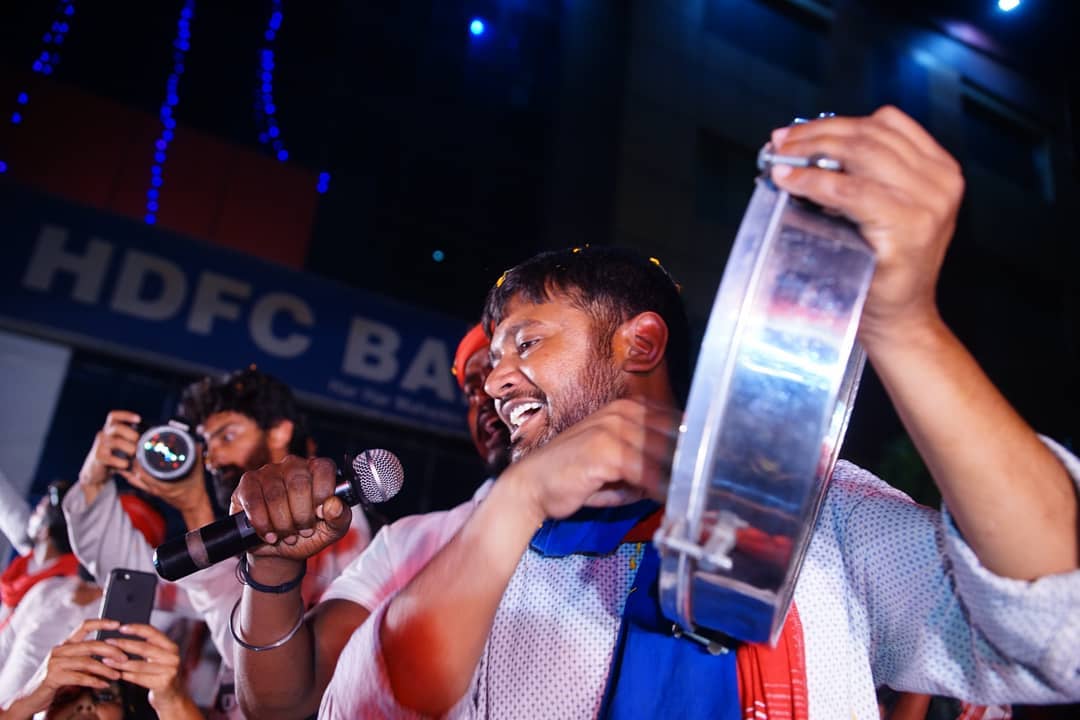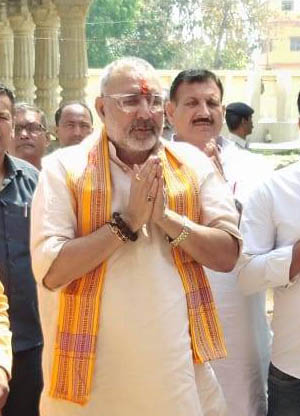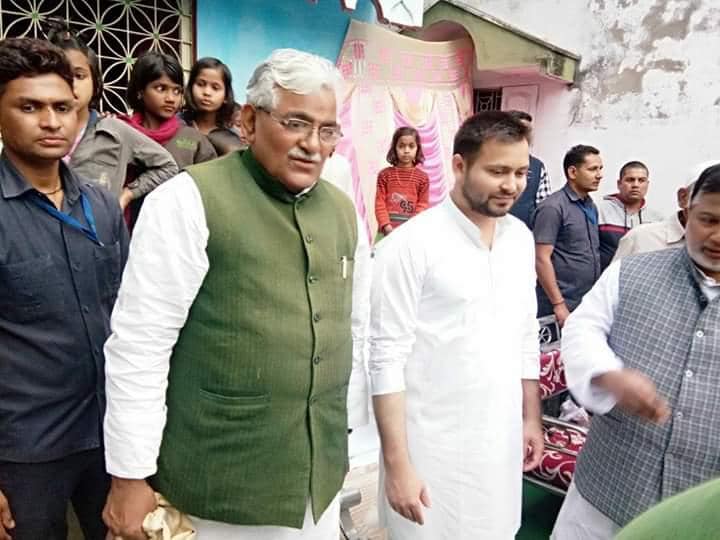
The Begusarai parliamentary constituency, which represents Begusarai district in northern Bihar has a distinct and prominent presence on the political map of Bihar. Unlike other parts of the state and the country, Begusarai district has by and large witnessed healthy, generally clean politics based on ideology. Since independence, the politics in Begusarai has revolved around two prominent political ideologies - Communism and Nationalism. Interestingly both these ideologies have their base cutting across caste, religion and assembly segments.
Communism was the dominant ideology of politicians in the area in the initial decades after independence, whereas the nationalism flag was in the hands of the Congress party till 1999, the time by when the Congress party had lost relevance in the politics of the state. Overtime, the BJP has taken over the void created by the absence of the Congress party. A section of Muslims who were traditional supporters of the Congress party could not associate with the BJP or the CPI, and this created an opportunity for regional parties - the Rashtriya Janata Dal (RJD), Janata Dal United or JD(U) and the Lok Janshakti Party (LJP) to make inroads into the politics of Begusarai and they were successful in creating some support base. Since then, the politics of Begusarai has got prominent colours of casteism and religionism, but still Communism and Nationalism have continued to prevail and play a major role in all electoral battles.
If we talk about the demography of this parliamentary constituency, the highest population is of upper caste Bhumihars. Muslims are a distant second, followed by Yadavs, Kurmis, and then Kushwahas, Mallahs, Brahmins, Dhanuks, and some other EBC and Scheduled Castes. The Bhumihar are very active in politics, and most of the prominent leaders across parties are from this caste. Barring a few exceptions, all MPs selected from the erstwhile Begusarai, the erstwhile Balia parliamentary constituencies (whose 5 assembly constituencies now come under Begusarai) and the current Begusarai have been Bhumihars.
While trying to understand the current political prospects in Begusarai, we must analyze earlier results, and while doing so, we must take into account the delimitation of parliamentary constituencies in 2008, the period following that, the fact that the adjoining Ballia parliamentary constituency has ceased to exist and that five of its assembly constituencies which were in Begusarai district - Barauni (Teghra), Bachhwara, Cheria Bariarpur, Bakhri and Sahebpur Kamal(it is a new assembly constituency carved out of the erstwhile Ballia assembly constituency) - have become part of the current Begusarai parliamentary constituency.
Begusarai has retained two assembly constituencies it had from in the earlier Begusarai district - Begusarai and Matihani. So, since the 2009 parliamentary election, the Begusarai constituency represents the complete and only the Begusarai district. Let's look at all the results briefly and then get into the details of the 2009 and 2014 elections.
The erstwhile Ballia parliamentary constituency was used to be a strong base of the Communists. Of the nine parliamentary elections held in Balia, the CPI had won four times, and the rest five times it was won by five different political parties - importantly, most of these five times, the CPI had come second. In the erstwhile Begusarai parliamentary constituency, the Congress party had a strong hold till 1998. By 1998, the Congress party had won this constituency eight out of 14 times, and whenever it had lost, it was due to a strong anti-Congress wave in the country. It had cadre-based strong support in Begusarai and Matihani, and had complete hold in the Barbigha and the Sheikhpura assembly constituencies which had always voted decisively in favour of the Congress party.
So, as per the results, the CPI has been traditionally strong with cadre based support across Begusarai district and the current Begusarai parliamentary constituency. That is why it was called the Leningrad of Bihar. Post delamination, only two parliamentary elections have been held in Begusarai constituency, let's try to understand these two elections in the context of the 2019 Lok Sabha polls.
In 2009, in a low voter turnout of just 48 per cent, JD(U) leader Monazir Hasan had won as the NDA candidate by a margin of 40,837 votes. The other main candidates were ex MP Shatrughan Prasad Singh of CPI, Anil Chaudhary of LJP, Amitha Bhushan from the Congress and Narendra Kumar Singh, the then independent MLA from Matihani as an independent candidate. Monazir Hasan had got 2,05,680 votes, whereas the runner-up Shatrughan Prasad Singh had got 1,64,843 votes. Anil Chaudhary, Amitha Bhushan and Narendra Kumar Singh had got 1,21,786, 74,565 and 61,220 votes respectively. Except Monazir Hasan, all the major candidates were Bhumihar, and each one of them had got Bhumihar votes. As an NDA candidate, Monazir Hasan had also got considerable Bhumihar votes. The Muslim voters along with Kurmi, Kushwaha and some other EBC castes had consolidated in his favour. Yet, the margin of victory was not high.
In the 2014 parliamentary election, JD(U) was not part of the NDA, and the three major political forces in the state - JD(U), the BJP and the RJD had made the contest triangular in most of the constituencies. Interestingly JD(U), which had won here in 2009, didn't field its candidate for the constituency in 2014. It extended support to the CPI with whom it had an alliance for the parliamentary elections. This suggested that JD(U) was not a major political force in this constituency.
The major candidates were Bhola Singh of the BJP as the NDA candidate, Tanveer Hasan of the RJD and Rajendra Prasad Singh of the CPI. They were all new candidates. Narendra Kumar Singh, who has a considerable support base among the Bhumihar voters in Matihani and had secured more than 60,000 votes in the 2009 parliamentary election, had joined JD(U)and so did not contest the 2014 election. Lalu Prasad-led RJD, which was out of power in Bihar for a long time and was not able to counter the JD(U)-BJP alliance in Bihar, had got the first opportunity in 2014 and had put every effort to reestablish itself. Taking a cue from the 2009 parliamentary election results of Begusarai, it had fielded a Muslim candidate whereas all other major candidates were Bhumihar. But this strategy didn't work for it.
That was because unlike in 2009, in 2014 there was strong sentiment in the country in support of the BJP and against the incumbent UPA government - and Bihar and Begusarai were no exception. Compared to 2009, there was much higher voter turnout, there was Hindu vote consolidation especially among Bhumihars and a large section of the EBC and SC castes in favour of the BJP. On the other hand there was Muslim-Yadav vote consolidation in favour of the RJD, but it was not good enough to defeat the BJP. The CPI slipped to third position, indicating many of its traditional voters had voted for the BJP and the RJD. The BJP had got 4,28,227 votes, RJD 3,69,892 votes and the CPI 1,92,639 votes. The margin of victory was 56,335 which was close to the 2009 margin.
If we talk about the 2019 parliamentary election in Begusarai, it seems the strategy of the BJP and the RJD was based on the 2009 and 2014 elections. The BJP is continuing with its 2014 strategy of contesting in the name of Hindu nationalism and ensure higher vote consolidation of the Bhumihars, Kurmis, most of the EBCs and Scheduled Castes in the name of nationalism and leadership of Narendra Modi, Nitish Kumar and Ram Vilas Paswan. The RJD has, meanwhile, decided to continue with its earliler strategy to field a Muslim candidate, ensure Muslim-Yadav vote consolidation, get some more caste-based support through its new alliance partners in the UPA, and expect considerable Bhumihar vote divide between the BJP and the CPI. The CPI has fielded its youth icon Kanhaiya Kumar, and he is working hard to re-energize the CPI cadre, which is present in all sections of the society across the parliamentary constituency.
However, the situation on the ground has altered compared to 2009 and 2014. Unlike 2009, there will not be so many divisions of the Bhumihar vote. The BJP has strong support among the Bhumihars, and with JD(U) and LJP on its side, it is trying to ensure less defection of the Bhumihar voters. But it is also true that in comparison to 2009 and 2014, the CPI seems to have energized much of its traditional support base among the Bhumihars, and should definitely get more of their support in 2019. It is also an equally true fact that the Muslims are not as firmly behind the RJD as they were in 2014. Many Muslims, especially the youths, have a feeling that only Kanhaiya Kumar can defeat the BJP's Giriraj Singh. It seems that Kanhaiya Kumar has been able to win back a considerable part of the CPI support base which in 2014 had moved to the BJP and the RJD on communal lines.
 Both Giriraj Singh of the BJP and Tanveer Hasan of the RJD say Kanyaiya Kumar is not in the battle, but it's a fact that in their conversations with their own communities, both of them target Kanhaiya Kumar more than each other. Giriraj Singh has been saying that if the Bhumihars vote for Kanhaiya, it will be Tanveen Hasan who will win. For his part, Tanveen Hasan is telling Muslims that if they vote for Kanhaiya Kumar, Giriraj Singh will win. Kanhaiya Kumar, meanwhile, has been able to connect with the common man, and with each day of his campaign he is emerging stronger. He is finding support among the youth of every section of society. His prospects in this election depends a lot on how much he has been able to convince the electorate of his winnability.
Both Giriraj Singh of the BJP and Tanveer Hasan of the RJD say Kanyaiya Kumar is not in the battle, but it's a fact that in their conversations with their own communities, both of them target Kanhaiya Kumar more than each other. Giriraj Singh has been saying that if the Bhumihars vote for Kanhaiya, it will be Tanveen Hasan who will win. For his part, Tanveen Hasan is telling Muslims that if they vote for Kanhaiya Kumar, Giriraj Singh will win. Kanhaiya Kumar, meanwhile, has been able to connect with the common man, and with each day of his campaign he is emerging stronger. He is finding support among the youth of every section of society. His prospects in this election depends a lot on how much he has been able to convince the electorate of his winnability.

Those who are looking at this election in Begusarai only from the caste and religion angle may fail to understand the ground reality. A triangular contest is certain, and this itself tells that the election in Begusarai will be beyond caste and religion and ideology may play major role. And if it happens, whoever wins or loses, it will be victory for democracy.
(The writer is a researcher)
